Results 8,331 to 8,340 of 11189
LinkBacks (?)
-
12-26-2016, 11:32 AM
-
09-02-2016, 05:39 PM
-
whole garden made with pallets!! Love it!! | Pallets | Pinterest | Pallets, Pallets Garden and Wooden Pallets
Refback This thread03-06-2016, 11:30 AM -
10-20-2015, 05:29 PM
-
06-12-2015, 08:00 PM
-
02-26-2015, 01:58 PM
-
01-05-2015, 04:13 PM
-
12-19-2014, 10:19 AM
-
EMERGENCY: HUGE FEMA PANDEMIC EXERCISE IN USA IN NOVEMBER, INTERNET SHUT DOWN PART OF EXERCISE | Prepare4Survival
Refback This thread12-03-2014, 10:39 PM -
Off Grid World ? Ugly Duckling Shipping Container Home Built by Artist Is a Beautiful Swan on the Inside
Refback This thread11-25-2014, 03:10 PM -
11-17-2014, 10:59 PM
-
11-13-2014, 11:18 AM
-
11-09-2014, 02:54 PM
-
10-28-2014, 11:38 PM
-
10-26-2014, 05:54 AM
-
10-16-2014, 11:28 AM
-
10-03-2014, 01:25 PM
-
10-02-2014, 09:16 PM
-
09-26-2014, 07:00 PM
-
09-26-2014, 01:56 PM
-
09-19-2014, 04:46 PM
-
09-13-2014, 05:49 AM
-
09-05-2014, 01:52 PM
-
09-01-2014, 09:39 AM
-
08-30-2014, 06:29 PM
-
08-10-2014, 06:29 AM
-
08-04-2014, 05:07 PM
-
07-23-2014, 11:14 AM
-
New Evidence on Expiration Dates | Medical Preparedness | Doom and Bloom (TM) | Doom and Bloom (TM)
Refback This thread07-22-2014, 10:10 AM -
07-18-2014, 08:37 PM
-
07-15-2014, 04:57 PM
-
07-11-2014, 01:40 AM
-
04-22-2014, 11:14 AM
-
04-18-2014, 12:57 PM
-
04-18-2014, 10:10 AM
-
04-14-2014, 12:18 AM
-
04-12-2014, 02:28 AM
-
03-02-2014, 11:43 PM
-
12-24-2013, 11:59 PM
-
12-07-2013, 11:04 PM
-
kitchen | Cob
Refback This thread11-25-2013, 03:24 PM -
10-22-2013, 10:25 PM
-
Apple Pie Braid | Sweets
Refback This thread09-26-2013, 07:58 AM -
09-02-2013, 04:44 PM
-
5 Reasons Why You May have to Bug Out Even Though You Don’t Want to | The Apartment Prepper's Blog
Refback This thread08-23-2013, 03:20 PM -
06-27-2013, 06:30 AM
-
06-23-2013, 08:11 PM
-
06-17-2013, 11:21 PM
-
05-24-2013, 05:06 PM
-
To Eat / BASIC LIST / SUGGESTED ITEMS FOR LONG TERM SURVIVAL - Page 275 - ALIPAC
Refback This thread05-01-2013, 03:49 AM
Thread Information
Users Browsing this Thread
There are currently 7 users browsing this thread. (0 members and 7 guests)
-
04-10-2024, 02:19 PM #8331If you're gonna fight, fight like you're the third monkey on the ramp to Noah's Ark... and brother its starting to rain. Join our efforts to Secure America's Borders and End Illegal Immigration by Joining ALIPAC's E-Mail Alerts network (CLICK HERE)
-
04-10-2024, 02:29 PM #8332

Shipping Container Homes
7Aprilat21:01 ∑
Container Home LivingIf you're gonna fight, fight like you're the third monkey on the ramp to Noah's Ark... and brother its starting to rain. Join our efforts to Secure America's Borders and End Illegal Immigration by Joining ALIPAC's E-Mail Alerts network (CLICK HERE)
-
04-10-2024, 02:39 PM #8333

Shipping Container Homes
3 d ∑
Container IdeaIf you're gonna fight, fight like you're the third monkey on the ramp to Noah's Ark... and brother its starting to rain. Join our efforts to Secure America's Borders and End Illegal Immigration by Joining ALIPAC's E-Mail Alerts network (CLICK HERE)
-
04-10-2024, 02:42 PM #8334


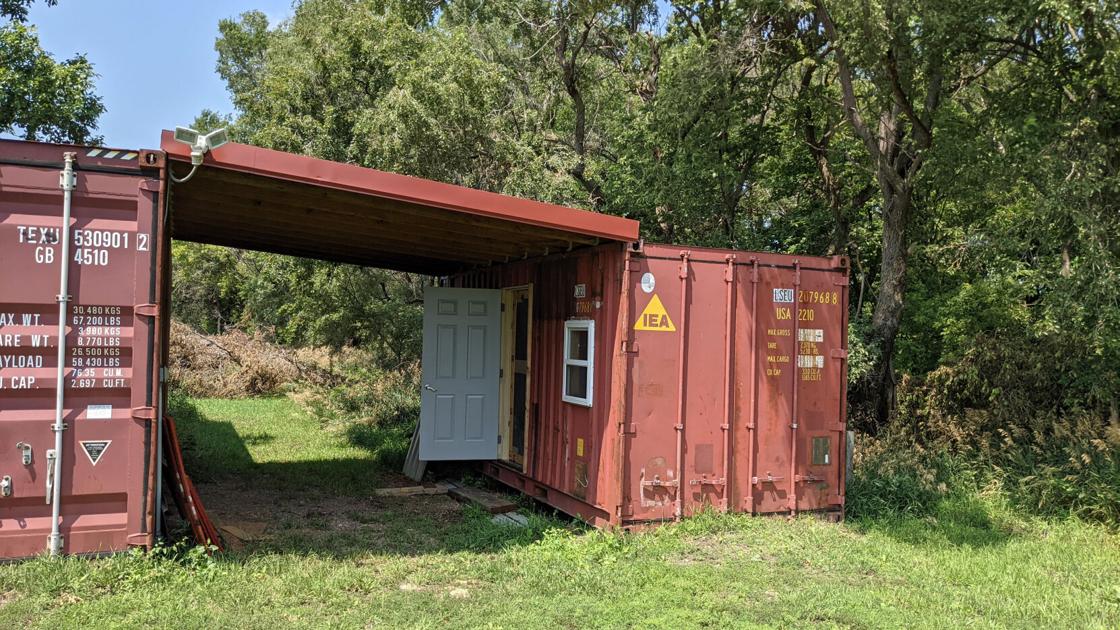
shipping container chicken coop / stablesLast edited by Airbornesapper07; 04-10-2024 at 02:57 PM.
If you're gonna fight, fight like you're the third monkey on the ramp to Noah's Ark... and brother its starting to rain. Join our efforts to Secure America's Borders and End Illegal Immigration by Joining ALIPAC's E-Mail Alerts network (CLICK HERE)
-
04-10-2024, 02:45 PM #8335

Mobile Chicken CoopIf you're gonna fight, fight like you're the third monkey on the ramp to Noah's Ark... and brother its starting to rain. Join our efforts to Secure America's Borders and End Illegal Immigration by Joining ALIPAC's E-Mail Alerts network (CLICK HERE)
-
04-10-2024, 03:05 PM #8336
Container Home Design
FacebookIf you're gonna fight, fight like you're the third monkey on the ramp to Noah's Ark... and brother its starting to rain. Join our efforts to Secure America's Borders and End Illegal Immigration by Joining ALIPAC's E-Mail Alerts network (CLICK HERE)
-
04-11-2024, 10:49 PM #8337
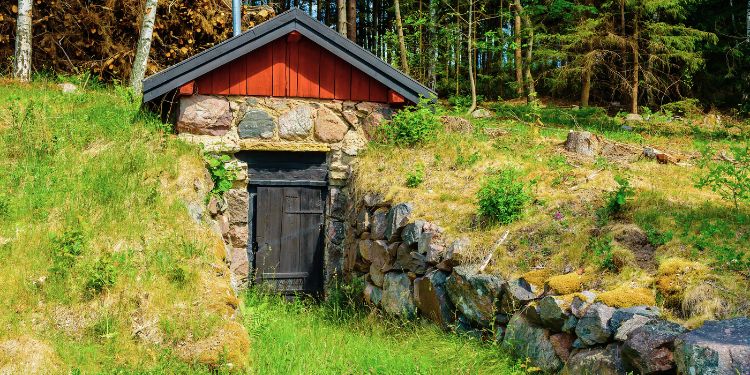
Better Than a Bunker
Better Than a Bunker
Thursday, April 11, 2024 5:31
 Source: https://www.askaprepper.com/
Source: https://www.askaprepper.com/
If you have a rural property safe from prying eyes, bugging in during a crisis makes more sense than bugging out. The bigger debate in a situation like this is whether itís better to bug in at a properly prepared homestead or hunker in a well-stocked bunker.
A bunker might seem like a perfectly prepared solution. Yet no matter how well you stock it, the resources will eventually dwindle, or there will be some sort of mechanical failure that forces you to come out. When you finally do emerge weeks or months later, itís hard to find fresh resources and even harder to establish sustainable food and water systems from scratch.
With some proper planning and preparation, a fortified homestead can give you access to self-sufficient systems for food, water, and shelter. Not to mention the psychological effects and other less tangible benefits.
With this in mind, we thought weíd examine why bugging in at home can be better than a bunker. This includes looking at some important drawbacks of a bunker, and the benefits of a properly developed rural homestead.
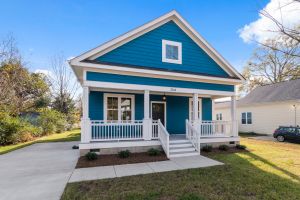 When it comes to bugging in at home rather than hunker in a bunker, you have to actively invest in developing your property over time. This includes creating sustainable food systems, electrical systems, and ways to create clean water.
When it comes to bugging in at home rather than hunker in a bunker, you have to actively invest in developing your property over time. This includes creating sustainable food systems, electrical systems, and ways to create clean water.
Related: 6 Bug In Mistakes That Youíre Probably Making Right Now
Many of these pay dividends during normal times by helping reduce your overall cost of living. While maximizing your chances of surviving when you bug in during a crisis.
The Psychological Advantage
Maintaining a positive mindset is absolutely critical in any crisis, especially a prolonged one! Nothing helps maintain a positive mindset better than the comforts of home.
When you bug in at home rather than a bunker, youíre also more likely to spend time outside and be exposed to natural light. The psychological benefits of these simple things should not be underestimated.
In a bunker, an electrical problem due to an external maintenance issue will likely force you out before you run out of food and water. When you bug in at home, itís easier to maintain every aspect of your electrical system.
The oil gets changed in the generator on time. The muffled exhaust port is less likely to get clogged by a bird nest, and storm damage to a solar panel is easier to repair when you see them every day.
Batteries also tend to have finite lifespans. Especially lead-acid batteries. Itís easier to repair, refurbish, or replace a bad battery when you bug in at home, and you know the lay of the land.
Discretion
When you develop sustainable systems at your property over the course of a few years, it rarely draws unwanted attention. No one bats an eye when you order day-old chicks through the mail. You donít need a county permit to expand your garden or plant fruit trees. Installing solar panels might even get you a tax credit.
During normal times, outsiders just see you as a family making some minor improvements to their rural property.
Food Sustainability
When you bug in at home, itís much easier to maintain a sustainable food system. This includes a big garden, perhaps some simple livestock, along with fruit and nut trees.
The best food sustainability picture for your setup will depend on your property, access to water, and the number of people you need to feed
Keeping a Garden
A self-sustainable garden needs at least 200 square feet of productive soil per person.
You can then plant it with vegetables that are easy to pickle, can, or put up for long-term storage in a root cellar. This includes things like: asparagus, potatoes, carrots, beets, onions, beans, peas, and squash.
If you want to be self-sufficient, you can learn here the best way to grow a year-round self-sustaining garden that will keep you and your family well feed during a crisis.
Ability to Replenish Clean Water Stores
Clean water is essential for surviving a crisis, and even a bunker with an expensive water reclamation system still needs maintenance. When you bug in at home, a small-scale water purification system is much easier to maintain.
Depending on the property, you might drive an additional sand point well when you need access to another source of groundwater. There might also be nearby natural sources of water you can harvest for purification.
The Opportunity to Keep Chickens
Keeping chickens will take your chances of successfully bugging in at home to the next level. A dozen laying hens will provide all the eggs a family of four needs, and if you feed them this plant, they will lay twice as many eggs. But they can survive just fine on kitchen scraps, bugs they forage, and a little bit of waste grain.
Their manure can be composted to create a potent fertilizer for the garden. You can even put them in portable coops in the garden to help keep the weed and insect population at bay.
Manís Best Friend at Your Side
Dogs and bunkers go together about as well as mustard and ice cream. When you bug-in at home you can keep your family dog living at your side. This alone will go a long way toward helping maintain a positive mindset and keeping your kids comfortable.
Depending on the type of dog you have, they can also be a great boon to your survival and security efforts. There are a lot of reasons why our ancient ancestors kept dogs living at our sides for tens of thousands of years. Youíll come to appreciate those benefits even more in an extended crisis.
Outside of a few cataclysmic scenarios, most of the time youíre better off weathering a crisis by bugging in or sheltering in place, rather than hiding in a bunker. Success with this strategy starts with preparing your food sustainability systems during normal times.
Better Than a Bunker
If you're gonna fight, fight like you're the third monkey on the ramp to Noah's Ark... and brother its starting to rain. Join our efforts to Secure America's Borders and End Illegal Immigration by Joining ALIPAC's E-Mail Alerts network (CLICK HERE)
-
04-12-2024, 10:51 PM #8338
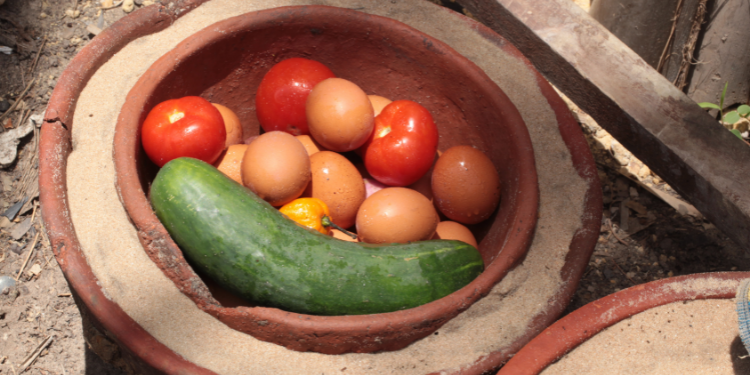
How to Build an Electricity Free Fridge
How to Build an Electricity Free Fridge
Friday, April 12, 2024 10:53

Source: https://www.askaprepper.com/
One of the most immediate problems we will face during a grid-down scenario is the loss of electricity. This brings with it a failure of our ability to keep food from spoiling.
Generators, battery banks and other off-grid power options can keep a refrigerator running but will rapidly consume valuable resources in the form of fuel and battery capacity.
Constructing an electricity-free refrigeration option will aid in preserving our battery and fuel stores.
Refrigeration Before Electricity
The electric refrigerator is a relatively modern innovation, and commercially available models have only been in homes for about a century.Before that, the simple icebox was the most common method of keeping food cold, and even during ancient times, people used ice houses to preserve food.
The problem with using ice is that it may be hard to come by in a grid-down scenario, which is where evaporative cooling comes into play.
Evaporative cooling has proven to be an effective method of keeping perishable foods from spoiling throughout history in areas where ice is not readily available.
The two elements required for an evaporative cooler are wind and water, which are far easier to obtain than large quantities of ice or snow.
Zeer Pots
The Zeer pot has been in use for thousands of years in one form or another but was resurrected from history by Mohamed Bah Abba in the 1990s.Abba developed the pot in pot refrigeration system, using two unglazed clay pots. These pots are different sizes; the smaller one should fit inside the larger one leaving a gap of about an inch or so.
The inner pot is where the food you want to keep cold goes, and the outer pot serves to contain the sand that will fill the gap between the pots.
How the Zeer Pot Works
The Zeer pot can keep the inner pot cool because of the process of evaporative cooling.
For water to evaporate, it needs to absorb heat to turn the liquid water into vapour. As the water vapour absorbs this heat, it will be replaced by cool air that will settle in the inner pot.
The reason why the pots that make up a Zeer pot must be unglazed is to allow moisture to seep through the walls, which has a similar effect that sweating has on humans. Likewise, the moist cloth that is draped over the Zeer pot also aids in the cooling process.
5 Ingenious Ways to Refrigerate Your Food Without Electricity
Much like how a breeze can help cool your body when your clothes are damp or when you are sweating, the wind blowing across the Zeer pot is an essential component of its ability to keep food cold.
How to Build a Zeer Pot
Constructing a Zeer pot is a very simple process and requires readily available materials at your local hardware store. The entire build process takes very little time to complete. In my case, I constructed a Zeer pot in less than twenty minutes.
Materials and Instructions
- One large unglazed terracotta pot
- One smaller unglazed terracotta pot
- Sand
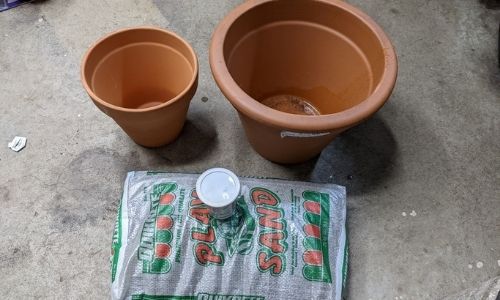
1. If there are drainage holes in the bottom of either of the pots, you will need to seal them.
In my case, I decided to use plumbers’ putty, but you can use anything you have on hand to keep the sand and water from leaking out of the bottom. Of course, whatever you decide to use needs to be waterproof.
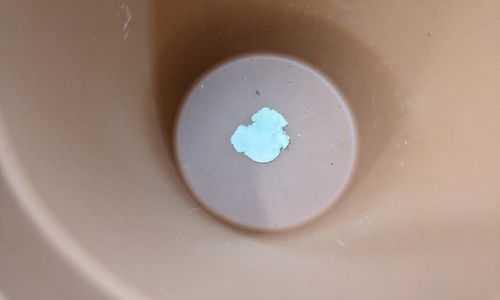
2. Pour a layer of sand into the bottom of the larger pot.
Related: How To Preserve Your Vegetables Using Sand
The goal is that when you place the smaller pot inside, the tops of both the pots will be at the same level or that the inner pot is slightly higher than the outer pot.
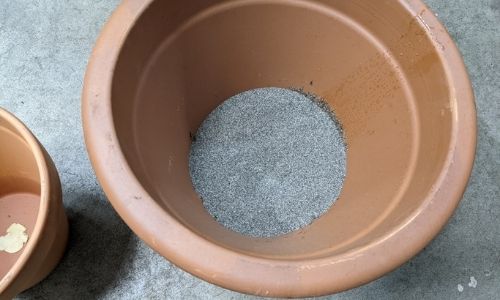
3. Place the smaller pot inside of the larger one.
Centre the pots as best you can and make sure the inner pot is not below the level of the outer pot, as this will mean that sand may fall into the inner pot.
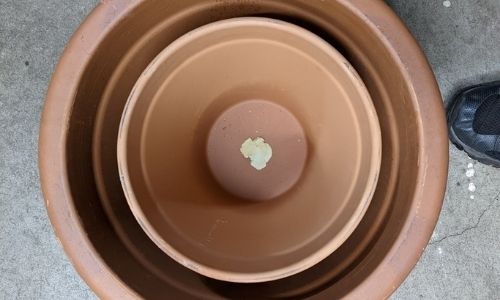
4. Pour sand in the gap between the pots filling it to the top.
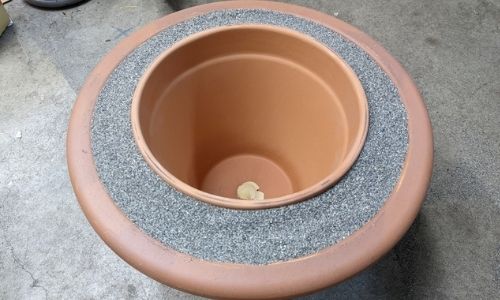
5. Pour water on the sand until the sand is saturated with water.
You will need to allow the pot to cool for a while before loading it with food. During this cool-down period, you will want to drape a damp cloth over the pots.
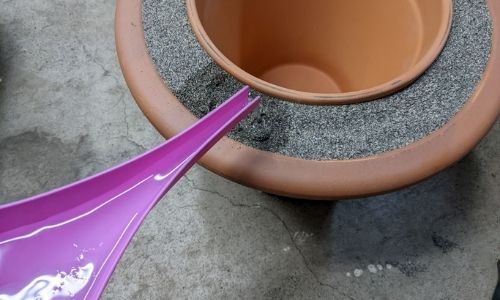
6. Fill the inner pot with whichever food you wish to keep cold.
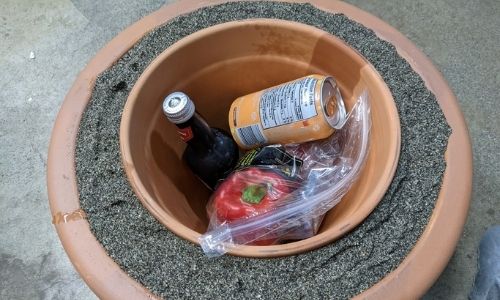
7. Cover your new Zeer pot with a damp cloth or lid.
It is essential that the fabric stay moist to facilitate the cooling effect. Then place the pot where it will be exposed to the wind and remain out of direct sunlight.
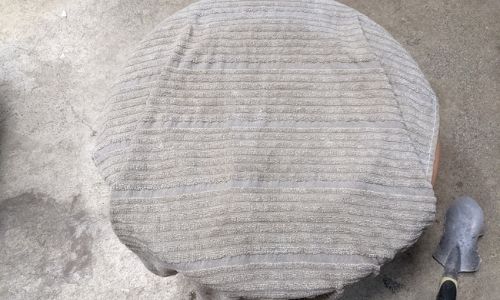
8. Pour water on the sand a couple of times a day to prevent it from drying out.
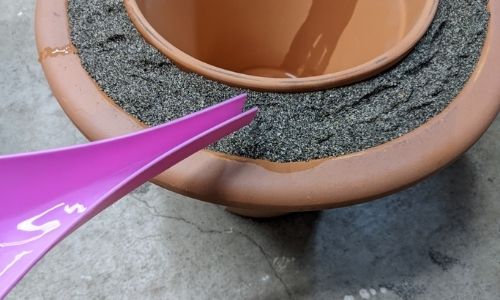
Limitations of the Zeer Pot
There are several limiting factors for this style of electricity-free refrigeration:
- The Zeer pot is best suited for use in dryer climates. As the humidity in the air increases, the effectiveness of the Zeer pot is decreased.
- You have to keep the wet sand and damp cloth moist for the Zeer pot to maintain effectiveness. This means that you may have to wet the sand several times a day.
- Evaporative cooling requires wind, so in areas where there is no breeze, the Zeer pot will not be nearly as effective.
- There is no way to ensure that the temperature remains stable throughout the day, meaning that there could be periods of time in which the temperature within the Zeer pot rises to unsafe levels.
- Direct sunlight cancels the cooling effects.
If you live in a hot, dry region, the Zeer pot is a fantastic option for extending the lifespan of fresh produce without expending precious resources to generate the electricity required for conventional refrigeration. It is cheap, effective, and genuinely off-grid.

How to Build an Electricity Free Fridge
Last edited by Airbornesapper07; 04-12-2024 at 10:55 PM.
If you're gonna fight, fight like you're the third monkey on the ramp to Noah's Ark... and brother its starting to rain. Join our efforts to Secure America's Borders and End Illegal Immigration by Joining ALIPAC's E-Mail Alerts network (CLICK HERE)
-
04-14-2024, 06:31 AM #8339If you're gonna fight, fight like you're the third monkey on the ramp to Noah's Ark... and brother its starting to rain. Join our efforts to Secure America's Borders and End Illegal Immigration by Joining ALIPAC's E-Mail Alerts network (CLICK HERE)
-
04-14-2024, 06:37 AM #8340If you're gonna fight, fight like you're the third monkey on the ramp to Noah's Ark... and brother its starting to rain. Join our efforts to Secure America's Borders and End Illegal Immigration by Joining ALIPAC's E-Mail Alerts network (CLICK HERE)


 226Likes
226Likes LinkBack URL
LinkBack URL About LinkBacks
About LinkBacks





 Reply With Quote
Reply With Quote


Report: Minnesotaís Somali Fraudsters Paid for Lamborghini,...
01-04-2026, 02:27 PM in General Discussion